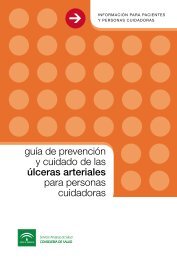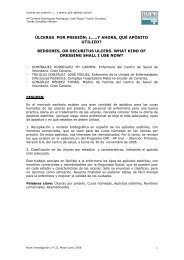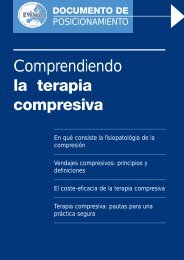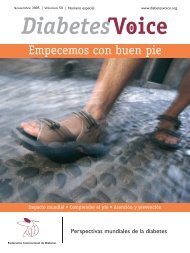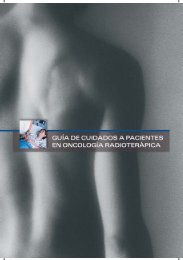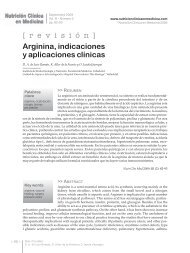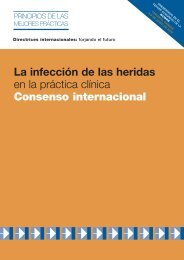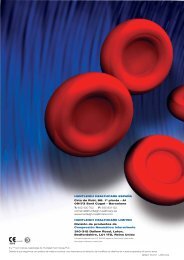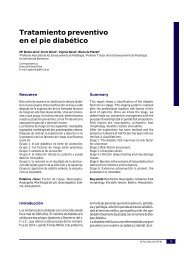Descargar - Úlceras.net
Descargar - Úlceras.net
Descargar - Úlceras.net
- No tags were found...
You also want an ePaper? Increase the reach of your titles
YUMPU automatically turns print PDFs into web optimized ePapers that Google loves.
The data also suggestedthat most patients would havebeen better served by an attemptat EV rather than prostheticbypass if no suitable veinwas available as a conduit.Patients who underwentbypass surgery after failed EVfared significantly worse thanthose who underwent bypassas their first treatment, as previoushad concluded Inhat (53)and our group (56).Therefore BASIL Investigatorsrecommended choosing the type of revascularizationson the basis of patient’s life expectancybecause EV are unlikely to reap thelonger-term benefits of surgery but is significantlyless expensive and morbid in the shortterm.Many patients who could not undergo avein bypass would probably have been betterserved by a first attempt at EV than by prostheticbypass. Surgeons should make everyeffort to use vein material.The fact that a failed EV attempt per se reducesthe chance of success of a subsequentsurgical revascularization should be borne inmind when considering treatment strategies.This means that the problem has not beensolved and raises the question whether the useof EV was strictly indicated in all CLI patients.PERSONAL EXPERIENCEAiming to contribute to clarify the role ofEV treatment vs. OS repair, we reviewed ourexperience with both forms of treatment in thelast five years. From January 2005 to August2010, 687 patients (451 male 65.6%, 236 female34.4%), average age 73.23 years, underwent OSor EV in response to severe CLI.Comorbidities were: diabetes 67%, hypertension78%, smoking 64%, COPD 57%, coronaryartery diseases 49%, hyperlipidemia 39%,cerebrovascular diseases 27%, renal failure 21%.We performed in these patients 802 di -fferent procedures: 213 EV proceduresOPEN SURGERY FOR REVASCULARIZATION OF THE DIABETIC FOOD ■ 91Table IClinical presentationsClinical presentations Bypass grafts EV Hybrid or% % Combined %Foot finger or ante foogangre<strong>net</strong> 31% 2.5% 5.0%Hind foot gangrene 7% 1.0% 2.5%Ulcers 5% 3.0% 11.0%Rest pain 3% 7.0% 6.0%Severe claudicatio – 13.0% 3.0%Total 46% 26.5% 27.5%(26.5%), 369 bypass graft (46%), and 220hybrid or combined procedures (27.5%). In115 patients (16.7%) the procedures werebilateral.Patients with extensive tissue loss or gangrene(Rutherford 6) and with longer arterialocclusions were first considered for surgicaltreatment. Patients with failed EV in case ofrelevant rest pain or non healing ulcers weresecondarily addressed to surgical treatment.Details regarding clinical presentationswere reported in Tab I.Surgical revascularization included pre -ferentially femoro-tibial or plantar and popliteo-plantarbypasses with autologous mate rialin 91% of cases and PTFE in 9%, details werereported in Tab II.In presence of important gangrene or tissueloss and TASC D multilevel occlusions,our preference was reserved to tibial or pedalTable IIType of material used for bypassType of material %In situ saphenous vein 59Translocated saphenous vein 8Reversed saphenous vein 6Composite vein 8Lesser saphenous vein 7Arm veins 2Homograft 1PTFE and composite 9





